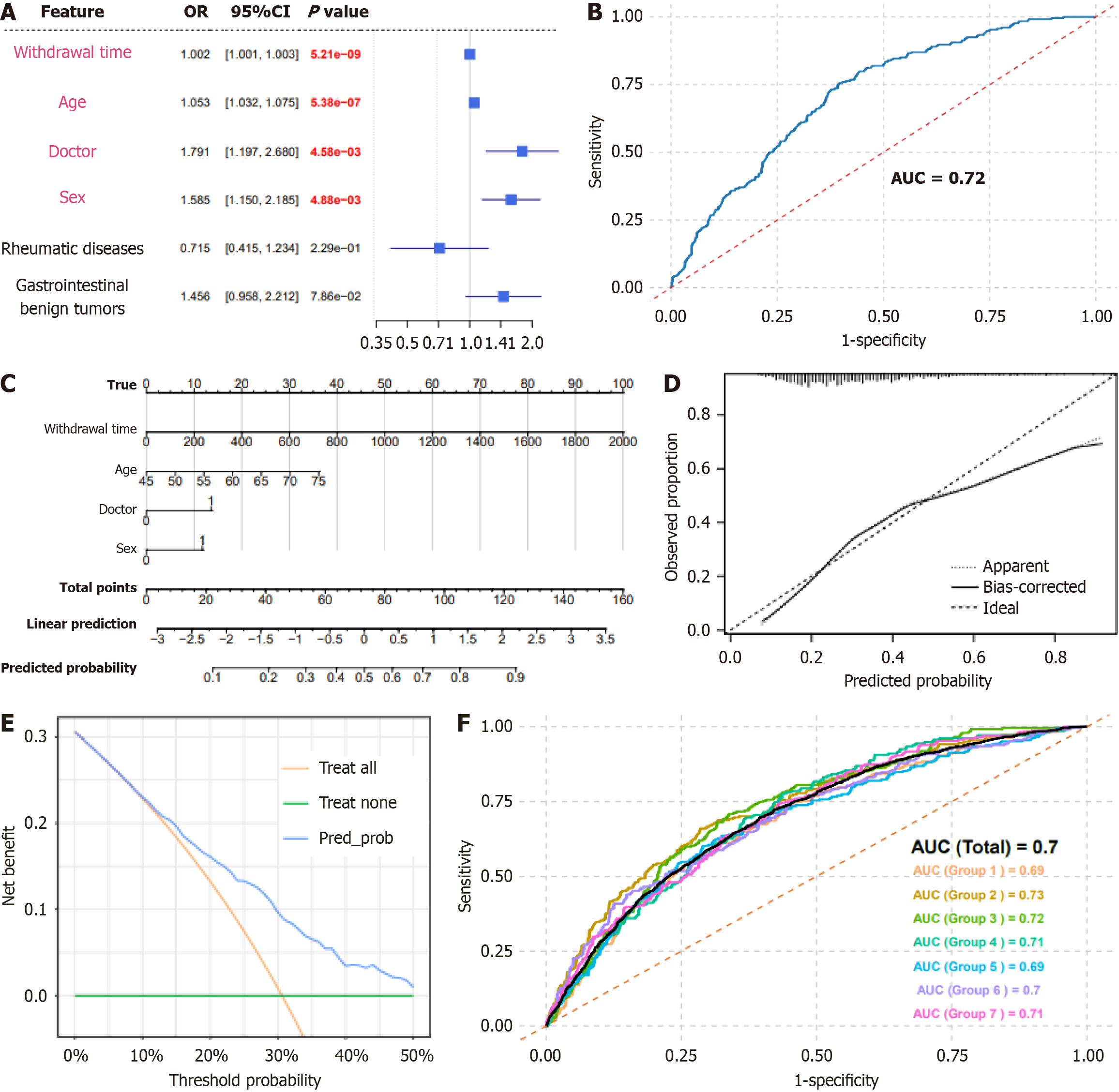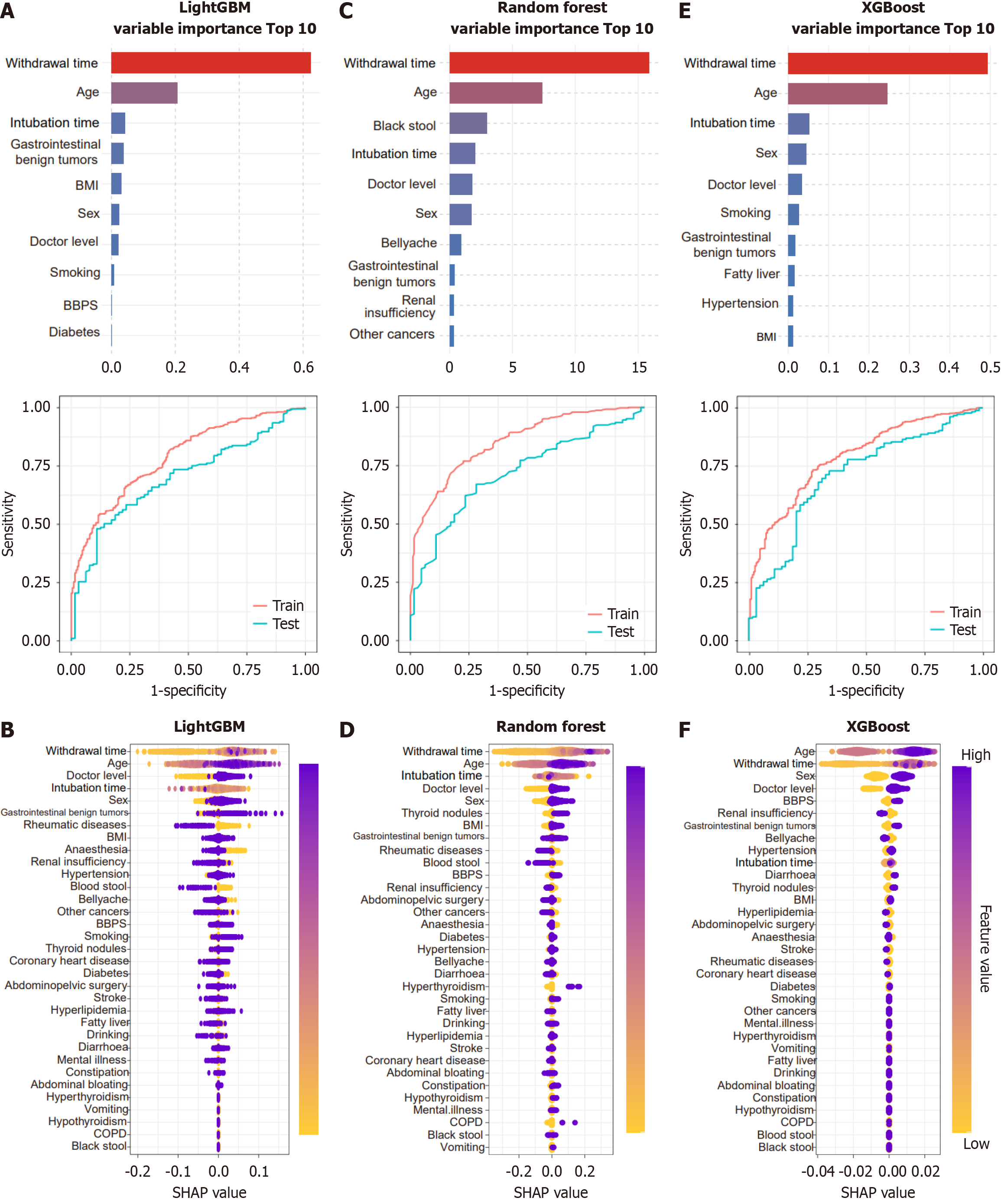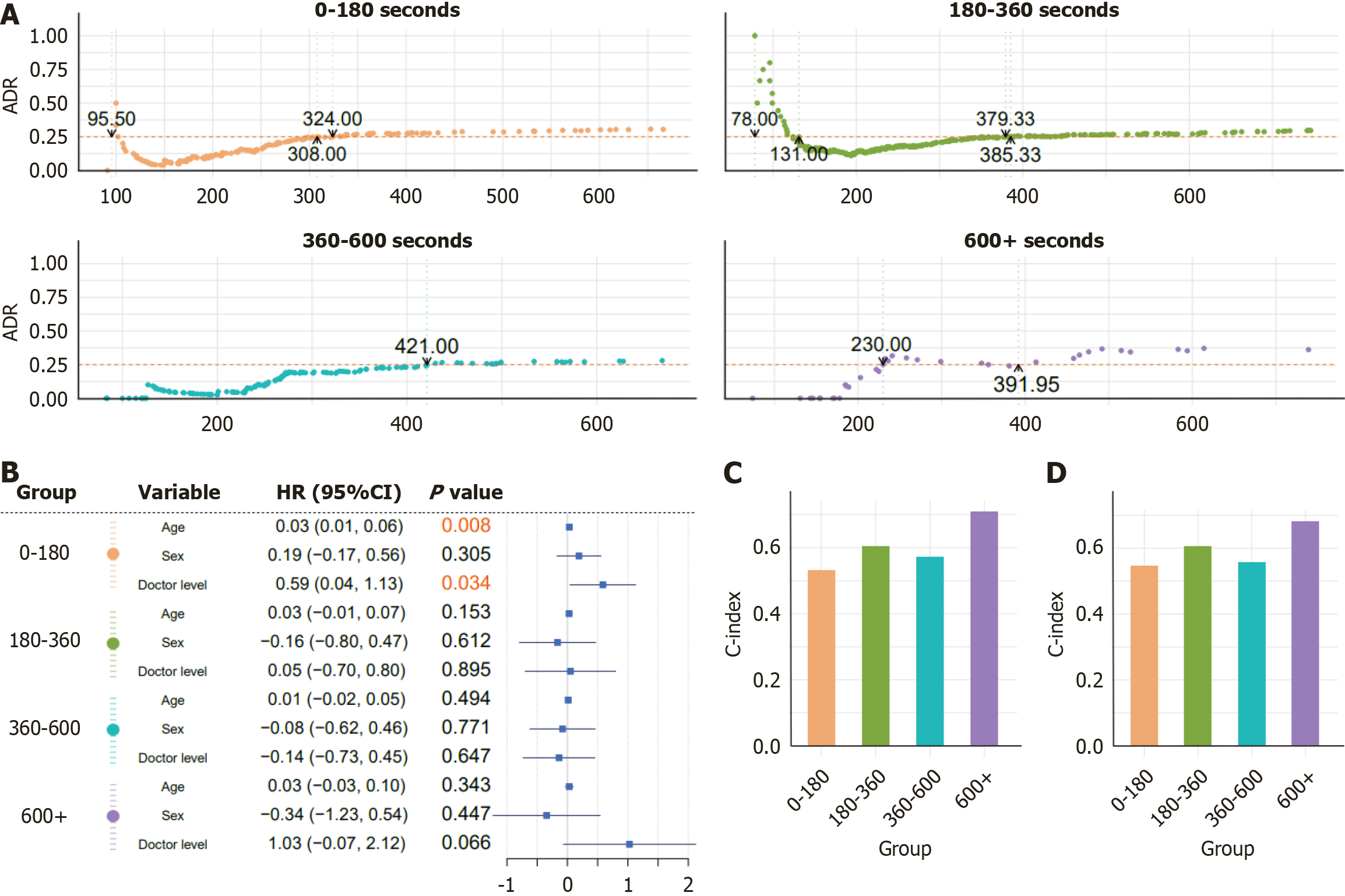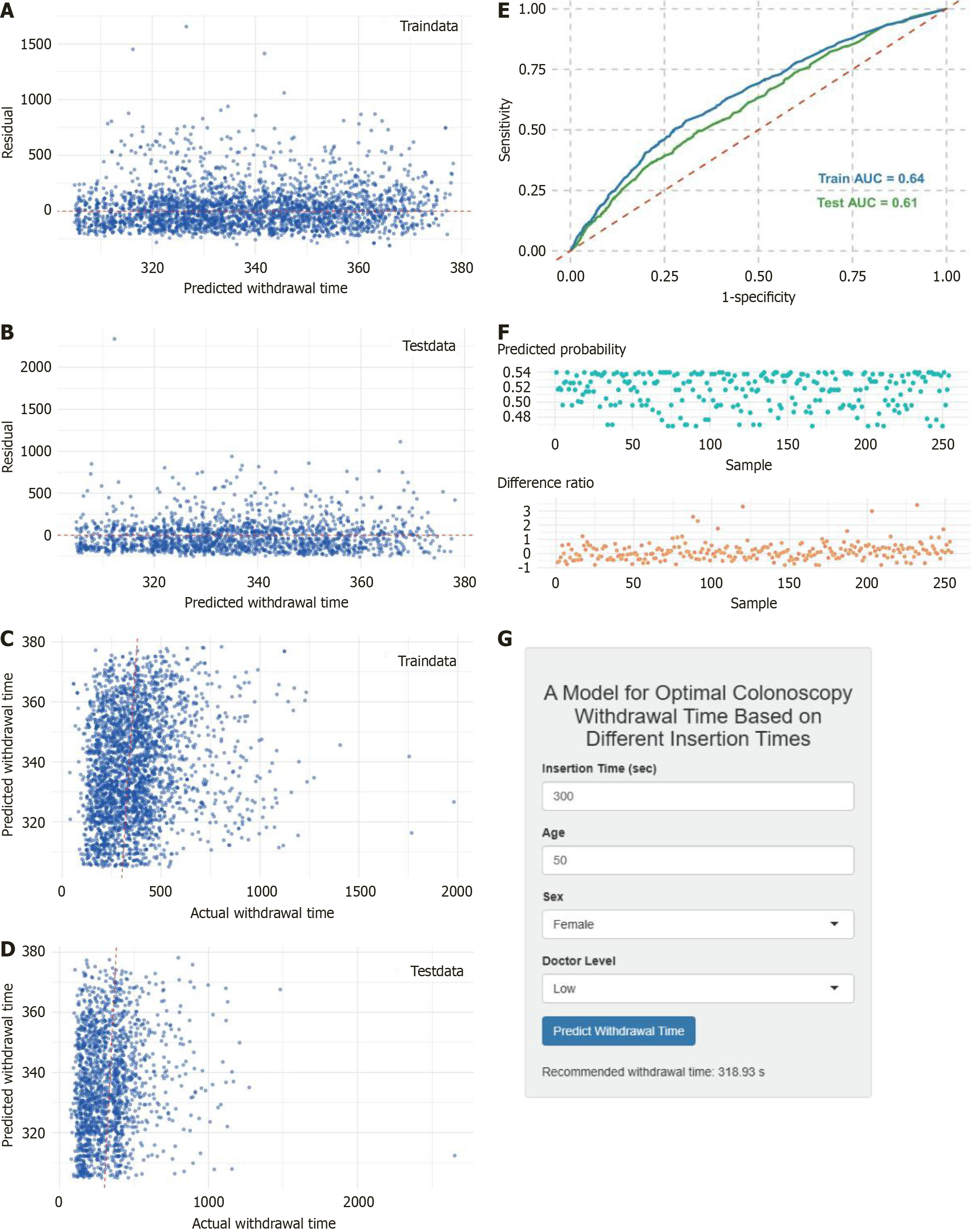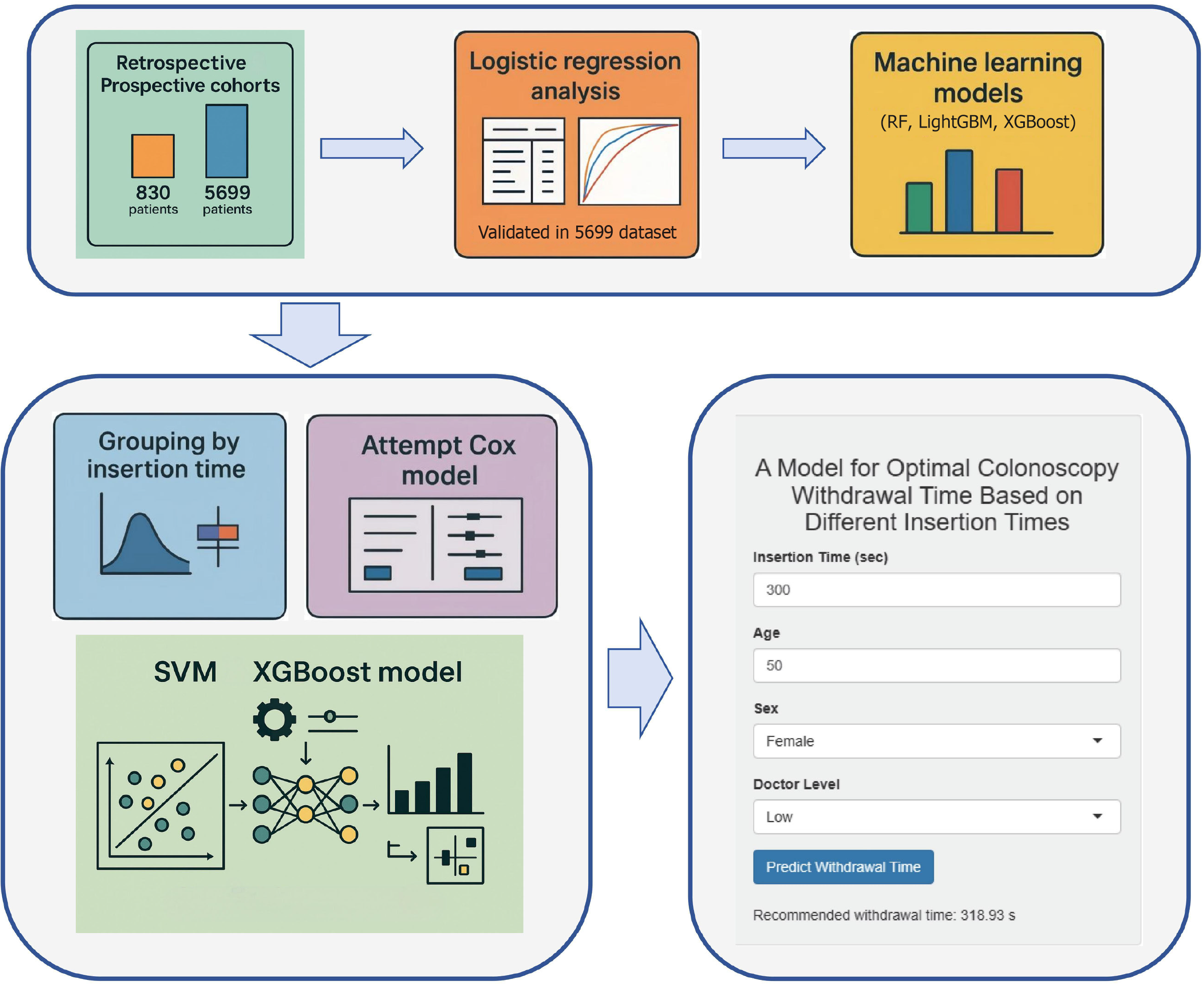Copyright
©The Author(s) 2025.
World J Gastroenterol. Oct 14, 2025; 31(38): 111364
Published online Oct 14, 2025. doi: 10.3748/wjg.v31.i38.111364
Published online Oct 14, 2025. doi: 10.3748/wjg.v31.i38.111364
Figure 1 Development and valuation of the colorectal adenoma risk-prediction model.
A: Forest plot; B: Area under the curve (AUC) was 0.720; C: Nomogram; D: Calibration curve; E: Decision curve; F: Prospective validation in patients with colorectal adenomas yielded the following AUCs: Total = 0.700; Group 1 = 0.690; Group 2 = 0.730; Group 3 = 0.720; Group 4 = 0.710; Group 5 = 0.690; Group 6 = 0.700; Group 7 = 0.710. OR: Odds ratio; CI: Confidence interval; AUC: Area under the curve.
Figure 2 Analysis of three algorithms.
A and B: Top 10 most important variables of the light gradient boosting machine algorithm, receiver operating characteristic (ROC) curve, and SHapley Additive exPlanations (SHAP) plot; C and D: Random forests algorithm, ROC curve, and SHAP plot; E and F: Extreme gradient boosting algorithm, ROC curve, and SHAP plot. LightGBM: Light gradient boosting machine; XGBoost: Extreme gradient boosting; BMI: Body mass index; BBPS: Boston bowel preparation scale; SHAP: SHapley Additive exPlanations; COPD: Chronic obstructive pulmonary disease.
Figure 3 Exploration of withdrawal time across insertion time groups.
A: Withdrawal time at an adenoma detection rate of 25% across insertion time groups (n = 830); B and C: Cox regression model and concordance index (C-index) value (n = 830); D: C-index value (n = 5699). ADR: Adenoma detection rate; HR: Hazard ratio; CI: Confidence interval; C-index: Concordance index.
Figure 4 Development and evaluation of the target-achieving withdrawal-time model.
A-D: Residual analysis and comparison of predicted vs actual values (n = 5699); E: Area under the curve was 0.640 in the training set and 0.610 in the test set; F: Validation results for 830 cases; G: Display of the prediction results obtained using the Shiny application. AUC: Area under the curve.
Figure 5 Study design.
LightGBM: Light gradient boosting machine; XGBoost: Extreme gradient boosting; RF: Random forests; SVM: Support vector machine.
- Citation: Xu BX, Xu CZ, Zhang HY, Chen XJ, Wei BN, Yang C. Personalizing withdrawal time by insertion time to achieve target adenoma detection rate in colonoscopy. World J Gastroenterol 2025; 31(38): 111364
- URL: https://www.wjgnet.com/1007-9327/full/v31/i38/111364.htm
- DOI: https://dx.doi.org/10.3748/wjg.v31.i38.111364













